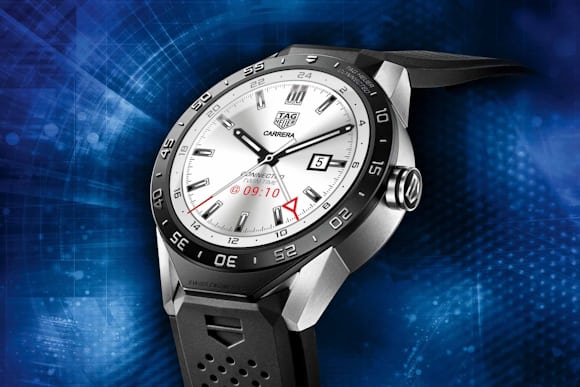The Federation Of The Swiss Watch Industry FH, which provides regular information on the state of the Swiss watch industry, has recently released its analysis for March and it's not good news. Major markets across the board are reporting declines, the market for luxury in general is facing challenges, and everyone seems to have different ideas as to what to do about it.
Sales have been in decline since July 2015, according to the FSWI, but the year-over-year decline for March is pretty sobering: 16% overall, with certain key markets showing especially sharp drops. The Federation stated, in its report, that "we must go back to the crisis of 2009 to find rates of variation of this order." The Federation also reported that "The main markets were particularly hard hit. Hong Kong recorded one of its steepest downturns, with -37.7%. The United States followed a similar trajectory in March(-32.9%) throwing the country's poor performance into sharp relief. China was clearly negative (-13.7%) undermining the recovery which had begun to take hold at the end of last year."
There are all sorts of different reasons for a decline in Swiss watch sales, of course – political and economic volatility and unrest worldwide for one; over-production and a resulting glut of unsold stock at retailers for another; over-aggressive pricing (long overdue for a correction) as well. And, of course, there's the as yet unanswered, and very difficult to answer, question: how much has the Swiss watch industry been affected by the Apple Watch in particular, and smartwatches in general?

For some brands, the answer during challenging times is to hold your ground and maintain as much as possible a distinctively Swiss identity, and a strong commitment to the image of stability and luxury so many see as essential to modern fine watchmaking. For others, it's to challenge the status quo in all sorts of ways. The entry level for Swiss watchmaking hasn't exactly gotten cheap, but it has become more approachable, with companies like Montblanc and Frederique Constant making a point of getting attention and headlines by figuring out how to offer classic complications at approachable prices. And, of course, Frederique Constant and TAG Heuer both have connected watch/smartwatch offerings as well. But is the game of combining more affordable pricing with adding smartwatches to a company's product offerings, a clever way of staying current and appealing, or a dangerous devaluation of the very qualities that make fine watchmaking attractive?

At least one man thinks TAG is going to live to regret its current strategy: Thierry Stern, CEO of Patek Philippe. In an interview with Bloomberg Pursuit's Corinne Gretler, published last March just before Baselworld, Stern was bluntly critical of TAG's approach to its Connected Watch, saying: "It's hard to compete with brands who are very powerful, we're talking about Apple . . . with TAG, again, it's not their field." Stern was also skeptical with regard to the TAG Heuer Carrera Heuer-02T chronograph tourbillon, priced at $15,950, saying (in the same interview) that the watch is "“nearly a joke to me . . . if they're willing to try to kill the quality of the Swiss product, I think they're on a very good track."

Post-Basel, it's still next to impossible to tell how different survival strategies will pan out over the next 12 to 18 months. The FSWI figures seem to indicate that brands ought to batten down the hatches for more stormy seas ahead, however. One symptom that smartwatches may be eating significantly into export sales is that the biggest decline since last March, by price category, was in the 200-500 franc category (though the difference from the lowest price category – under 200 francs – and the highest – 3,000 francs and over – was not dramatic, at 21.7% vs. 20%). A surprise for everyone, however, is that the TAG Heuer Connected watch is meeting with surprisingly strong demand. At a meeting with HODINKEE at Baselworld 2016, Mr. Biver frankly expressed to us his surprise that demand was so strong, saying that there was demand for 80,000 TAG Heuer Connected smartwatches for 2016 – representing, at a price of $1,500, $120,000,000 in sales. Not an enormous sum, perhaps, for LVMH overall, but nothing to sneeze at either.

Certainly, one of the more significant trends we have seen in recent months has been a re-positioning of certain models to create more welcoming price points at the entry level; just this week, Vacheron Constantin announced its newest Quai de lÎle watch would be offered in steel at just under $15,000, and Frederique Constant has a new manufacture perpetual calendar for an incredible 8,350 francs. While some – maybe many – in the industry fear that such pricing is letting a genie out of the bottle that will prove impossible to put back, for whatever reasons, the industry as a whole seems to sense that consumers moving forward will be increasingly on the lookout for a substantive value proposition. And it also seems to be increasingly aware that over a decade of significant price increases may have resulted in the unwitting abandonment of a solid base of consumers in home retail territories. Whether it's through more attractive pricing, less alienating messaging, entry into the terra incognito that is smart and connected watches, or some combination of all three, the Swiss watch industry at every level is looking for answers to the identity crisis posed by a challenging business environment, in an increasingly chaotic world.
Don't have the HODINKEE App yet? Get years of amazing watch content plus new stories, breaking news, and access to great new features like HODINKEE Live, free on iOS.
No comments:
Post a Comment